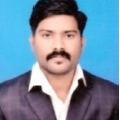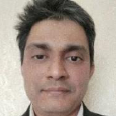International Journal of Image, Graphics and Signal Processing (IJIGSP)
IJIGSP Vol. 16, No. 1, 8 Feb. 2024
Cover page and Table of Contents: PDF (size: 1748KB)
Copy-Move Forgery Detection and Localization Framework for Images Using Stationary Wavelet Transform and Hybrid Dilated Adaptive VGG16 with Optimization Strategy
Full Text (PDF, 1748KB), PP.38-60
Views: 0 Downloads: 0
Author(s)
Index Terms
Copy-move forgery, Stationary wavelet transform, Dilated CNN, Tuna swarm optimization, Bald eagle search optimization
Abstract
Due to the availability of low-cost electronic devices and advanced image editing tools, changing the semantic meaning of a particular image has become straightforward by employing various image manipulation techniques like image copy-move, image splicing and removal operations. The tampered images with this sophisticated software are rich in visualization, making the modifications invisible to the naked eye. Detecting these image alterations is laborious, time-consuming, and often yields inappropriate results. The current techniques use conventional square, slide regular, and artifacts procedures to identify image deviations to combat image forgery practices. Still, these techniques exhibit problems related to generalization, training and testing, and model complexity. So, in this paper, a novel image forgery detection and localization framework is implemented using stationary wavelet transform (SWT), and a Hybrid Dilated Adaptive VGG16 model with optimization is introduced to classify forgery images and localize the forgery regions present in an image. Initially, the proposed framework processes the input image with SWT to decompose an image into different subband and further divide it into patches. After that, the hybrid dilated adaptive VGG16 Network (HDA-VGG16Net) is built to extract the deep image features from the patches. Later, the Hybridized Tuna Swarm with Bald Eagle Search Optimization (HTS-BESO) technique is applied to optimize the VGG16 parameters. Finally, feature matching is formed using multi-similarity searching to recognize whether the input image is forged or original by locating forgery regions. The evaluation results are compared with existing forgery detection approaches to ensure the efficiency of the developed model by considering multiple performance measures.
Cite This Paper
Prabhu Bevinamarad, Prakash Unki, Padmaraj Nidagundi, "Copy-Move Forgery Detection and Localization Framework for Images Using Stationary Wavelet Transform and Hybrid Dilated Adaptive VGG16 with Optimization Strategy", International Journal of Image, Graphics and Signal Processing(IJIGSP), Vol.16, No.1, pp. 38-60, 2024. DOI:10.5815/ijigsp.2024.01.04
Reference
[1]“Photo tampering throughout history,” 2004. http://pth.izitru.com/2004_02_00.html (accessed Sep. 25, 2020).
[2]M. Zanardelli, F. Guerrini, R. Leonardi, and N. Adami, “Image forgery detection: a survey of recent deep-learning approaches,” Multimed. Tools Appl., pp. 17521–17566, 2022, doi: 10.1007/s11042-022-13797-w.
[3]M. K. Arnold, M. Schmucker, and S. D. Wolthusen, “Techniques and applications of digital watermarking and content protection,” Ann. Phys. (N. Y)., vol. 54, no. 2, 2003, [Online]. Available: http://www.mendeley.com/research/no-title-avail/%5Cnhttp://books.google.com/books?hl=en&lr=&id=iVEOYEukfmUC&
oi=fnd&pg=PR13&dq=Techniques+and+Applications+of+Digital+Watermarking+and+Content+Protection&
ots=Pz_DSY_0e-&sig=2gsD5uG.
[4]A. Piva, “An Overview on Image Forensics,” ISRN Signal Process., vol. 2013, pp. 1–22, 2013, doi: 10.1155/2013/496701.
[5]A. C. Popescu and H. Farid, “Exposing Digital Forgeries by Detecting Duplicated Image Regions,” Tech. Report, TR2004-515, Dep. Comput. Sci. Dartmouth Coll. Hanover, New Hampsh., no. 2000, pp. 1–11, 2004, [Online]. Available: http://os2.zemris.fer.hr/ostalo/2010_marceta/Diplomski_files/102.pdf.
[6]K. B. Meena and V. Tyagi, “A copy-move image forgery detection technique based on Gaussian-Hermite moments,” Multimed. Tools Appl., vol. 78, no. 23, pp. 33505–33526, Dec. 2019, doi: 10.1007/s11042-019-08082-2.
[7]M. Bilal, H. A. Habib, Z. Mehmood, T. Saba, and M. Rashid, “Single and Multiple Copy–Move Forgery Detection and Localization in Digital Images Based on the Sparsely Encoded Distinctive Features and DBSCAN Clustering,” Arab. J. Sci. Eng., vol. 45, no. 4, pp. 2975–2992, 2020, doi: 10.1007/s13369-019-04238-2.
[8]K. B. Meena and V. Tyagi, “A copy-move image forgery detection technique based on tetrolet transform,” J. Inf. Secur. Appl., vol. 52, Jun. 2020, doi: 10.1016/j.jisa.2020.102481.
[9]G. S. Priyanka and K. Singh, “An improved block based copy-move forgery detection technique,” Multimed. Tools Appl., vol. 79, pp. 13011–13035, 2020.
[10]S. P. Jaiprakash, M. B. Desai, C. S. Prakash, V. H. Mistry, and K. L. Radadiya, “Low dimensional DCT and DWT feature based model for detection of image splicing and copy-move forgery,” Multimed. Tools Appl., vol. 79, no. 39–40, pp. 29977–30005, 2020, doi: 10.1007/s11042-020-09415-2.
[11]S. Dua, J. Singh, and H. Parthasarathy, “Detection and localization of forgery using statistics of DCT and Fourier components,” Signal Process. Image Commun., vol. 82, no. July 2019, p. 115778, 2020, doi: 10.1016/j.image.2020.115778.
[12]Q. Lyu, J. Luo, K. Liu, X. Yin, J. Liu, and W. Lu, “Copy Move Forgery Detection based on double matching,” J. Vis. Commun. Image Represent., vol. 76, no. September 2019, p. 103057, 2021, doi: 10.1016/j.jvcir.2021.103057.
[13]T. Qazi, M. Ali, K. Hayat, and B. Magnier, “Seamless Copy–Move Replication in Digital Images,” J. Imaging, vol. 8, no. 3, pp. 1–15, 2022, doi: 10.3390/jimaging8030069.
[14]Y. Abdalla, M. Tariq Iqbal, and M. Shehata, “Copy-move forgery detection and localization using a generative adversarial network and convolutional neural-network,” Inf., vol. 10, no. 9, 2019, doi: 10.3390/info10090286.
[15]N. Alipour and A. Behrad, “Semantic segmentation of JPEG blocks using a deep CNN for non-aligned JPEG forgery detection and localization Content courtesy of Springer Nature , terms of use apply . Rights reserved . Content courtesy of Springer Nature , terms of use apply . Rights re,” pp. 8249–8265, 2020.
[16]J. H. Bappy, C. Simons, L. Nataraj, B. S. Manjunath, and A. K. Roy-Chowdhury, “Hybrid LSTM and Encoder-Decoder Architecture for Detection of Image Forgeries,” IEEE Trans. Image Process., vol. 28, no. 7, pp. 3286–3300, 2019, doi: 10.1109/TIP.2019.2895466.
[17]X. Lin and C. T. Li, “PRNU-Based Content Forgery Localization Augmented with Image Segmentation,” IEEE Access, vol. 8, no. 2, pp. 222645–222659, 2020, doi: 10.1109/ACCESS.2020.3042780.
[18]M. A. Elaskily et al., “A novel deep learning framework for copy-moveforgery detection in images,” Multimed. Tools Appl., vol. 79, no. 27–28, pp. 19167–19192, 2020, doi: 10.1007/s11042-020-08751-7.
[19]Y. Rodriguez-Ortega, D. M. Ballesteros, and D. Renza, “Copy-move forgery detection (Cmfd) using deep learning for image and video forensics,” J. Imaging, vol. 7, no. 3, 2021, doi: 10.3390/jimaging7030059.
[20]N. Jindal, “Copy move and splicing forgery detection using deep convolution neural network , and semantic segmentation Content courtesy of Springer Nature , terms of use apply . Rights reserved . Content courtesy of Springer Nature , terms of use apply . Rights reser,” pp. 3571–3599, 2021.
[21]N. Goel, S. Kaur, and R. Bala, “Dual branch convolutional neural network for copy move forgery detection,” IET Image Process., vol. 15, no. 3, pp. 656–665, 2021, doi: 10.1049/ipr2.12051.
[22]N. Krishnaraj, B. Sivakumar, R. Kuppusamy, Y. Teekaraman, and A. R. Thelkar, “Design of Automated Deep Learning-Based Fusion Model for Copy-Move Image Forgery Detection,” Comput. Intell. Neurosci., vol. 2022, 2022, doi: 10.1155/2022/8501738.
[23]R. Ganeshan, S. Muppidi, D. R. Thirupurasundari, and B. S. Kumar, “Autoregressive-Elephant Herding Optimization based Generative Adversarial Network for copy-move forgery detection with Interval type-2 fuzzy clustering,” Signal Process. Image Commun., vol. 108, no. November 2021, p. 116756, 2022, doi: 10.1016/j.image.2022.116756.
[24]S. Koul and M. Kumar, “An efficient approach for copy-move image forgery detection using convolution neural network Content courtesy of Springer Nature , terms of use apply . Rights reserved . Content courtesy of Springer Nature , terms of use apply . Rights reserved .,” pp. 11259–11277, 2022.
[25]G. P. Nason and B. W. Silverman, “The Stationary Wavelet Transform and some Statistical Applications,” pp. 281–299, 1995, doi: 10.1007/978-1-4612-2544-7_17.
[26]L. Xie, T. Han, H. Zhou, Z. R. Zhang, B. Han, and A. Tang, “Tuna Swarm Optimization: A Novel Swarm-Based Metaheuristic Algorithm for Global Optimization,” Comput. Intell. Neurosci., vol. 2021, 2021, doi: 10.1155/2021/9210050.
[27]S. Ferahtia, H. Rezk, M. A. Abdelkareem, and A. G. Olabi, “Optimal techno-economic energy management strategy for building’s microgrids based bald eagle search optimization algorithm,” Appl. Energy, vol. 306, no. PB, p. 118069, 2022, doi: 10.1016/j.apenergy.2021.118069.
[28]Y. Zhou et al., “Remote sensing scene classification based on rotation-invariant feature learning and joint decision making,” Eurasip J. Image Video Process., vol. 2019, no. 1, 2019, doi: 10.1186/s13640-018-0398-z.
[29]X. Lei, H. Pan, and X. Huang, “A dilated cnn model for image classification,” IEEE Access, vol. 7, pp. 124087–124095, 2019, doi: 10.1109/ACCESS.2019.2927169.
[30]P. Wang et al., “Understanding Convolution for Semantic Segmentation,” Proc. - 2018 IEEE Winter Conf. Appl. Comput. Vision, WACV 2018, vol. 2018-Janua, no. March, pp. 1451–1460, 2018, doi: 10.1109/WACV.2018.00163.
[31]R. A. Zitar, M. A. Al-Betar, M. A. Awadallah, I. A. Doush, and K. Assaleh, “An Intensive and Comprehensive Overview of JAYA Algorithm, its Versions and Applications,” Arch. Comput. Methods Eng., vol. 29, no. 2, pp. 763–792, 2022, doi: 10.1007/s11831-021-09585-8.
[32]G. Brammya, S. Praveena, N. S. Ninu Preetha, R. Ramya, B. R. Rajakumar, and D. Binu, “Deer Hunting Optimization Algorithm: A New Nature-Inspired Meta-heuristic Paradigm,” Comput. J., vol. 133, no. 1, p. bxy133, 2019, doi: 10.1093/comjnl/bxy133.
[33]E. Ardizzone, A. Bruno, and G. Mazzola, “Copy-Move Forgery Detection by Matching Triangles of Keypoints,” IEEE Trans. Inf. Forensics Secur., vol. 10, no. 10, pp. 2084–2094, 2015, doi: 10.1109/TIFS.2015.2445742.
[34]D. Tralic, I. Zupancic, S. Grgic, and M. Grgic, “CoMoFoD - New database for copy-move forgery detection,” Proc. Elmar - Int. Symp. Electron. Mar., no. September, pp. 49–54, 2013.
[35]Q. Yang, D. Yu, Z. Zhang, Y. Yao, and L. Chen, “Spatiotemporal Trident Networks: Detection and Localization of Object Removal Tampering in Video Passive Forensics,” IEEE Trans. Circuits Syst. Video Technol., vol. 31, no. 10, pp. 4131–4144, 2021, doi: 10.1109/TCSVT.2020.3046240.
[36]A. R. Gu, J. H. Nam, and S. C. Lee, “FBI-Net: Frequency-Based Image Forgery Localization via Multitask Learning with Self-Attention,” IEEE Access, vol. 10, pp. 62751–62762, 2022, doi: 10.1109/ACCESS.2022.3182024.
[37]P. Hewage et al., “Temporal convolutional neural (TCN) network for an effective weather forecasting using time-series data from the local weather station,” Soft Comput., vol. 24, no. 21, pp. 16453–16482, 2020, doi: 10.1007/s00500-020-04954-0.
[38]Cristin R, G. M. N.R, R. L, and V. S, “Image Forgery Detection Using Back Propagation Neural Network Model and Particle Swarm Optimization Algorithm,” Multimed. Res., vol. 3, pp. 21–32, 2020.
[39]S. Uma and P. D. Sathya, “Copy-move forgery detection of digital images using football game optimization,” Aust. J. Forensic Sci., vol. 54, no. 2, pp. 258–279, 2022, doi: 10.1080/00450618.2020.1811376.
[40]C. B and P. V. Bhaskar Reddy, “An approach for copy-move image multiple forgery detection based on an optimized pre-trained deep learning model,” Knowledge-Based Syst., vol. 269, p. 110508, 2023, doi: 10.1016/j.knosys.2023.110508.


